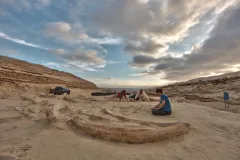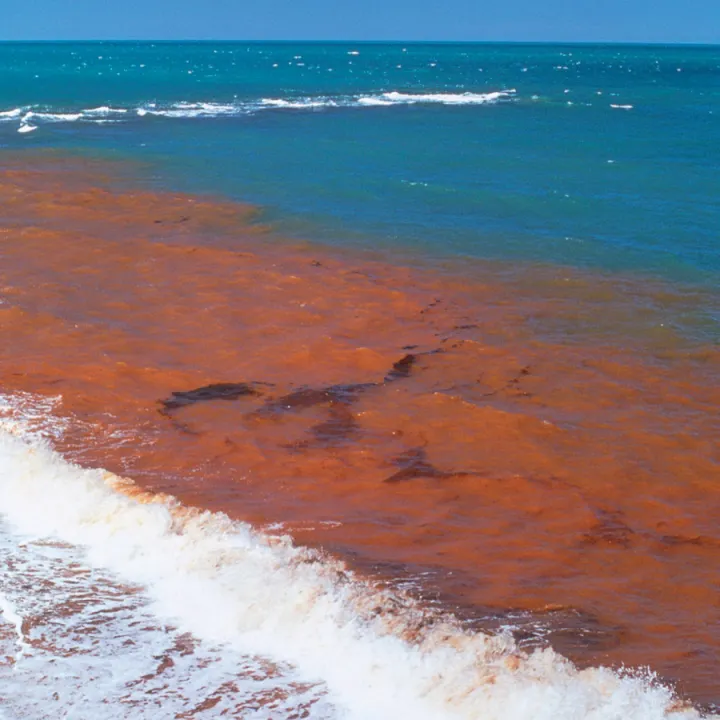The Whale Graveyard Whodunit

One of the ocean's tiniest organisms often does the most harm. Microscopic algae can grow rapidly to form harmful algal blooms (sometimes called "red tides"), which create unhealthy water conditions that can kill animals large and small. In 2013, hundreds of Florida manatees died from eating toxic red algae, which also killed off their usual seagrass food. That same year, more than 200 dead sea turtles washed ashore in El Salvador, also killed by eating toxic algae. In 2012, it was jumbo squid on the California coast, and the year before that it was sardines.
Such mass mortality events are common nowadays. But did they also kill large marine animals in the past? Dr. Nick Pyenson, the curator of fossil marine mammals at the Smithsonian National Museum of Natural History, has found the oldest example of a toxic algae bloom—between 6 and 9 million years old—that killed off large whales and other animals. He led the excavation of a graveyard of more than 40 now-extinct baleen whales (rorquals), walrus-whales (extinct dolphins with tusked walrus-like faces), penguins, seals, and aquatic sloths at a site in Chile named Cerro Ballena, Spanish for "whale hill." His new research, which solves the mystery of these deaths, was published in Proceedings of the Royal Society B.
If finding a stockpile of ancient marine mammals wasn't exciting enough, Dr. Pyenson had other surprises in store. Nearly all of the skeletons were complete. They lay belly-up, suggesting that they had died at sea, floated to the surface, and were quickly buried under sand when they washed ashore. And the skeletons were arranged in four layers, as if these whales had died in a similar fashion many times over a few thousand years—a recurring pattern.
What could have killed many different types of marine mammals at sea, and have done so on four separate occasions? Dr. Pyenson could only think of one plausible explanation: toxic algal blooms. On the fossilized bones, he spotted tiny orange splotches that are exactly the right size to be dinoflagellates, a common culprit behind harmful algal blooms.
Harmful algal blooms form when there is extra fertilizer in the water, which creates the perfect conditions for algae to thrive. These blooms are becoming more common as fertilizers from farms, golf courses, and people's front lawns wash into the sea. But there are also natural fertilizers that cause blooms. If toxic algae killed the marine mammals at Cerro Ballena, they likely bloomed when water flowing through the Andes carried iron from the mountains' rocks into the ocean. Iron is a vital nutrient that is hard to come by at sea, so would have been the perfect fertilizer for the toxic algae.
Such large whales are rarely the victims of toxic algal blooms today; there is only one known case, when fourteen humpbacks were found dead with toxic algae in their stomachs in 1987. The chances of a large group of whales crossing the path of a harmful algal bloom are very low today, said Dr. Pyenson, because human hunting has decimated whale populations. "We reduced their abundances by upwards of 95 percent," he said. "So we are living in a very altered world today where baleen whales are not nearly as abundant as they used to be.”
Read more about the expedition to Cerro Ballena at Dr. Nick Pyenson's blog, and see more photos and 3D scans of the fossils at the expedition website. Also read his blog posts about other research here on the Ocean Portal.



